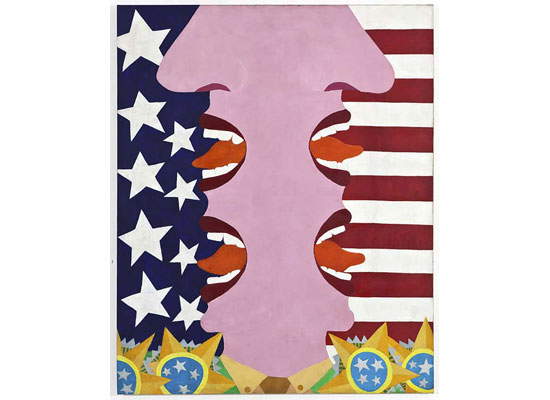The long march of Pop art. An erudite account of the movement's lingering influence
In this article published in The Art Newspaper and written by Pac Pobric, Pop art is analyzed, dwelling on the influence that this movement still has in our days on our society. We offer the article in my translation and here is the link to the original. ;)
Since the late 1950s, with the advent of Pop art, artists have been tasked with addressing the legacy and implications of the said movement. In recent years, scholars and curators have been analyzing it with the same urgency as at the time of its birth. This month, Yale University Press published The long march of Pop: Art, Music and Design 1930-95, a book by art historian Thomas Crow that examines the role of artists such as Andy Warhol and Roy Lichtenstein in the vast context of twentieth-century American and international culture. Here, the long history of Pop art is analyzed, paralleling it with American folk art traditions and relating it to later developments such as punk in 1980s Los Angeles.
It has always been thought that Pop art faded at the end of the 1960s, Crow asserts. But I don’t think it did. The book shows how the Pop impulse that arrived so vibrantly in the 1960s was the result of a long preparation argues Crow. Afterwards, it headed into other areas of culture.
Her book is the latest in a series of contemporary reexaminations of the broad influence of Pop art. The Seattle Art Museum is hosting Pop Departures, which pairs historical artists such as Warhol with current artists such as Josephine Meckseper, through Jan. 11. In addition, Crow’s book was published prior to International Pop at the Walker Art Center in Minneapolis (April 9-Sept. 6), in which a look at the movement’s development beyond the Western world is cast. But this interest is not only taking place in America: the Tate Gallery in London recently hosted retrospectives devoted to Roy Licthenstein (in collaboration with the Art Institute of Chicago in 2013) and Richard Hamilton (in 2014).
 |
| Antônio Henrique Amaral, Homenagem ao Século 20 /21 (Homage to the 20th/21st Century), 1967, courtesy of the Walker Art Center for The Art Newspaper |
The Whitney Museum of American Art in New York has been particular focus of exhibitions on Pop art and its influence in recent years. In 2012, the museum hosted two exhibitions that went beyond Pop ostentation and approached its darker implications-Sinister Pop and Dark and Deadpan: Pop in TV and the Movies. The following year, the Whitney held Robert Indiana: Beyond Love, the artist’s first American retrospective, which was followed in 2014 by a major retrospective devoted to Jeff Koons.
Donna de Salvo, principal curator of the Whitney and co-organizer of Sinister Pop, says the renewed scholarly interest in Pop art leads to a reevaluation of our own contemporary culture. In any case, the multitude of images we see everywhere today that come from existing figurative art constituted the strength of Pop art. Thus the latter attests to our current situation. History allows us to observe our own time, and in an amusing way, Pop art offers us a point of reflection on that.
Art historian Hal Foster, author of 2011’s The First Age of Pop, argues that, in particular, Pop influences change depending on how we view our identities. After a certain period in capitalist society, we have become homo imago, he says, referring to the fact that our identity is tied to the way we are represented in images. People are nowadays a kind of image, and this is one of the consequences of Pop art, especially Warhol’s, Foster says. The development of social networks such as Facebook and Twitter, which are flooded with images, proves Foster’s point.
For Crow, Pop art needs to be understood in its deeper social history in order to make sense of it. Figurative art is not valued if it is marginalized. It is reductive not to think about its relationships and ongoing feedback. Pop art, perhaps more than any other art movement, offers these comparisons and illustrates their persistent importance. It emerges that Pop art has never stopped.
Warning: the translation into English of the original Italian article was created using automatic tools. We undertake to review all articles, but we do not guarantee the total absence of inaccuracies in the translation due to the program. You can find the original by clicking on the ITA button. If you find any mistake,please contact us.



























